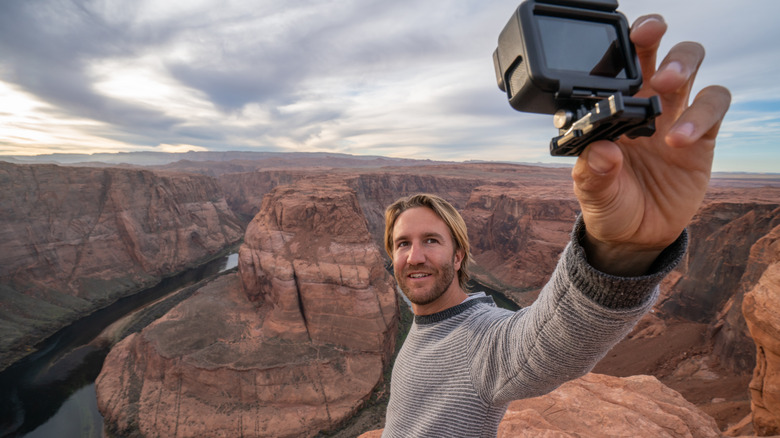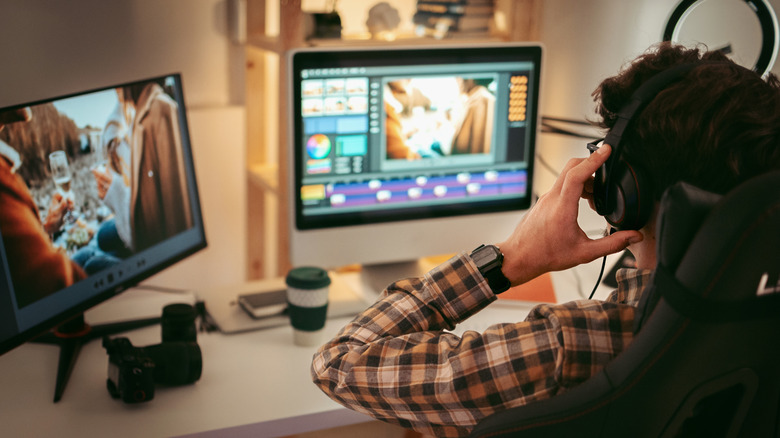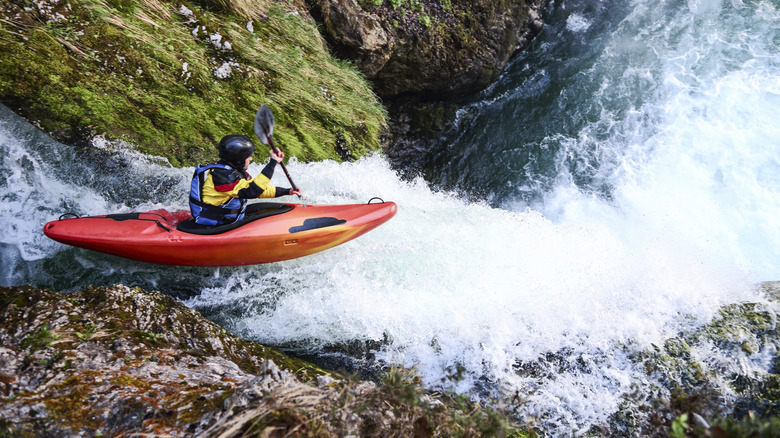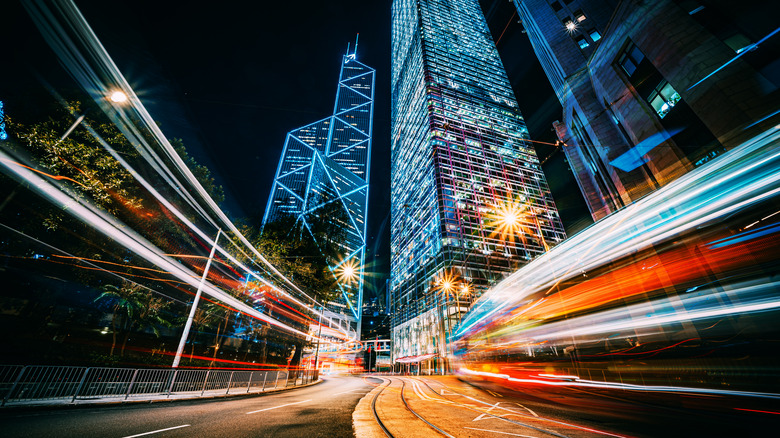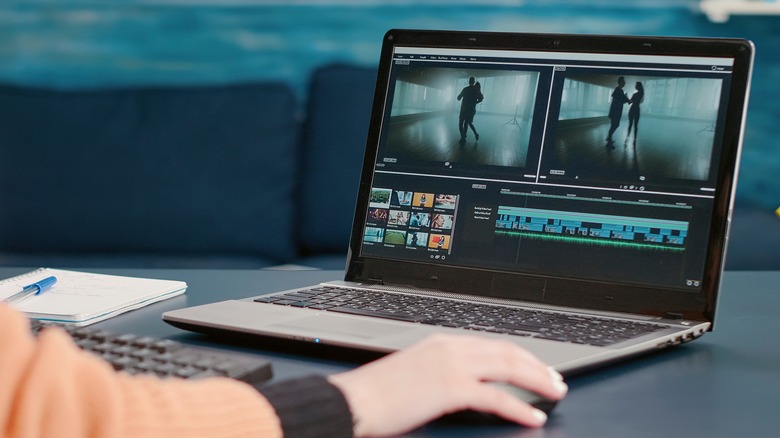5 Tips & Tricks For Editing Your GoPro Videos
GoPro is the most recognizable name in the action camera industry. If you don't have the budget for one, there are a number of GoPro alternatives that won't break the bank. Regardless, capturing footage from your recent adventure climbing Mount Whitney or surfing the waves of Waimea Bay is just half the fun of owning a GoPro. The other half comes from editing that footage into something exciting to share with friends and family.
The GoPro Hero 11 Black and Hero 12 Black both shoot footage with high-definition quality, which helps put viewers in the shoes of the adrenaline junky who captured the video. Editing a video is all about adding excitement and telling a story. Very few videos seen online are posted without edits. While not everyone who creates a video with their GoPro is looking for likes and follows on social media, they don't want to show off a poor-quality video to their loved ones.
It's important for the same amount of care that went into capturing the video to go into editing it. Delivering a video worth watching will take time and patience. Luckily, there are a few tricks to highlight the most exciting parts of the captured footage to tell a compelling story.
The right editing software is necessary
While a talented editor can deliver professional-level videos with just about any kind of editing program, using the right software will make all the difference. Some great options exist, but GoPro users should choose a program that suits their expertise. GoPro Quik is ideal for beginners. It's the official video editing app from GoPro and is easy to use. So much so that, in some cases, users can choose a template, and Quik will automatically edit the video for them.
With its many professional-grade features, experienced editors will find Adobe Premiere Pro most beneficial. If you want to splice footage together from other fellow GoPro users and editors, collaborating on Adobe Premiere Pro is easy. Adobe programs can be a tad pricey, however. Luckily, other affordable options such as HitFilm and DaVinci Resolve exist.
Finding software that meets all the necessary criteria is crucial. Not every program will have all the same features, so decide which features are necessary. Once you know what you're looking for to produce the best possible video, download a program that meets those needs.
Add some music
While the natural sounds of surfing, rock climbing, and dirt-bike riding can be immersive, adding music to the final video creates a whole new layer. You can elicit emotion from the audience, giving the video more weight. That doesn't mean you can't keep some natural sounds from your adventure in the video.
There are creative methods for interjecting background noise from your hang-gliding excursion with Frank Sinatra's "Come Fly With Me." Keep the sounds of setting up and talking to friends until the action starts. Then, blast the chorus of your song choice to suck in the viewers. There's also nothing stopping you from laying background noise over some background music.
Adjust the volume for music to be lower than everything else, but keep it loud enough to be heard, and you get the best of both worlds. Play with the settings to find what works best for your video.
Stabilize your shot during the editing process
GoPro introduced a stabilization feature called HyperSmooth in the Hero 7 Black and upgraded it to HyperSmooth 4.0 with the Hero 10 Black. This feature identifies motion in the camera and crops the image sensor to reduce shakiness in the footage. In other words, it gives a more clear image of the recording.
However, HyperSmooth isn't a flawless feature and doesn't always deliver a crisp image. If the HyperSmooth feature doesn't work as well as anticipated, some editing software features similar technology that can be used during editing. Unfortunately, GoPro Quik doesn't possess such a feature, but programs such as Adobe Premiere Pro and PowerDirector do.
While viewers expect some degree of shakiness in footage captured from a GoPro, it makes for a jarring experience if there's too much. You don't want your audience to experience motion sickness from your videos. Smooth it out a little and deliver an immersive experience for viewers.
Play with time
An entertaining video isn't always linear and doesn't only contain footage at normal speed. There are a lot of different ways to manipulate time in a video. With edits, you can slow things down, speed them up, rewind, and even replay specific portions of a recording. These little edits make for an exciting and shareable masterpiece.
Editors can apply slow-motion effects to a particularly thrilling part of the video, ensuring the audience fully grasps its importance. Some editors will even use downtime footage, such as swimming out to the surf to catch a wave or preparing bike gear for a ride at the track, as an interesting storytelling device. Rather than forcing the audience to sit through that footage at normal speed, speed it up until the thrills begin. That's when you can slow things down and show every exciting second.
Another creative technique is playing footage out of order. Start with the end and end with the beginning of a trek. Show the audience a brief glimpse of what they're in for from the start. Don't be afraid to freeze time either by splicing the footage with a quick cut to a photograph or a still frame.
Filters and transitions make all the difference
GoPros can now achieve 120fps at 4K resolution, but it's not only the frame rate and resolution that improve the visual quality of your video. Filming in a low-light environment will lead to grainy footage that nobody will want to watch. Special effects and filters play a significant role in cleaning up the footage and making the videos enjoyable.
Filters help videos convey a specific mood or vibe of an editor's choosing. They can affect the pace of a video without ever manipulating its speed and elicit certain emotions from the audience. Choose a bright and vibrant filter for those fast-paced, adrenaline-inducing moments and then a black-and-white filter to reel the audience back in during other moments.
Transitions fill a similar role by adding some excitement between scenes. It's how editors tie their shots together into a cohesive video. While a simple cut to a new scene is good enough at times, there are other moments when something outside the box is necessary. Some common transitions include a wipe to the left or right, fading in and out, and a dissolving effect. Don't be afraid to toy with the different transitions, but use them sparingly; too many can prove exhausting for the audience.
